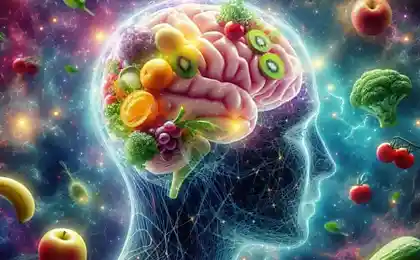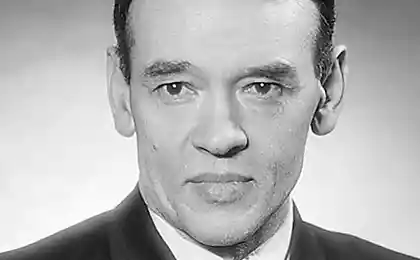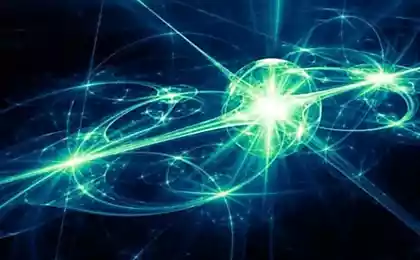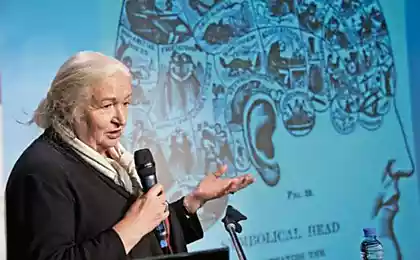934
7 stunning paradoxes that put the brain into a dead end
Paradoxes can be found everywhere, from ecology to the geometry and to the logic of chemistry. Even the computer on which you are reading an article full of paradoxes!
Website publishes seven pretty fascinating paradoxes. Some of them are so weird that we can not fully understand what is the essence.

The paradox of Banach-Tarski h2> Imagine that you are holding the ball. Now imagine that you started this ball tear into pieces, with the pieces may be of any shape, what you like. Put the pieces together so that you get two balls instead of one. What is the size of the balls compared to ball-original?
The paradox Peto h2> It is obvious that the whales are much larger than us, it means that they have the bodies of more cells. And every cell in the body can theoretically become malignant. Therefore, the whales much more likely to develop cancer than people, so?
The problem now h2> That something might physically exist, it should be present in our world for some time. There can be no object without the length, width and height, but also can not be an object without the "duration" - "instant" object, that is, one that does not exist at least some amount of time does not exist.
The paradox Moravec h2> When solving problems that require thoughtful reasoning, people happen trouble. On the other hand, the main motor and sensory functions such as walking causes no trouble at all.
Immortal ant on a rope h2> Imagine an ant crawling on a rubber rope length of one meter at a rate of one centimeter per second. Also imagine that every second rope stretched over one kilometer. It will reach an ant ever to end?
The paradox of the ecological balance h2> Model "predator-prey" - is an equation describing the actual environmental situation. For example, the model can determine how to change the number of foxes and rabbits in the forest. Let's say that herbs that feed the rabbits in the forest becomes more and more. We can assume that such an outcome for rabbits is favorable because an abundance of good grass they will multiply and increase the number.
The paradox of newt h2> Gather a group of friends together and watch this video. When finished, let everyone express their opinion, the sound increases or decreases during the four tones. You will be surprised how different are the answers.
Website publishes seven pretty fascinating paradoxes. Some of them are so weird that we can not fully understand what is the essence.

The paradox of Banach-Tarski h2> Imagine that you are holding the ball. Now imagine that you started this ball tear into pieces, with the pieces may be of any shape, what you like. Put the pieces together so that you get two balls instead of one. What is the size of the balls compared to ball-original?
According to the theory of sets, the two resulting ball would be the same size and shape as the original Shar. Furthermore, given that in this case the balls are of different volume, then each of the balls can be converted in accordance with another. This suggests that the pea can be divided into balls the size of the sun.
The trick paradox lies in the fact that you can break the balls into pieces of any shape. In practice, this is not possible - the structure of the material and ultimately the size of atoms, there are some limitations.
To make it really possible to break the ball the way you like it, it must contain an infinite number of affordable zero-dimensional points. Then the ball of such points will be infinitely dense, and when you tear it forms lumps can get so complex that will have a certain volume. And you can collect these pieces, each of which contains an infinite number of points in the new sphere of any size. A new ball will continue to consist of infinite points, and both balls will be equally infinitely dense.
If you try to translate the idea into practice, then nothing happens. But everything turns out great when working with mathematical spheres - infinitely divisible number set in three-dimensional space. Resolved a paradox called the Banach-Tarski theorem and plays an important role in mathematical set theory.
The paradox Peto h2> It is obvious that the whales are much larger than us, it means that they have the bodies of more cells. And every cell in the body can theoretically become malignant. Therefore, the whales much more likely to develop cancer than people, so?
Not this way. Peto Paradox, named after Professor Richard Peto of Oxford, argues that a correlation between the size of the animal and the cancer does not exist. In humans and whales chance of getting cancer is about the same, but some breeds of tiny mice are much more likely.
Some biologists believe that the lack of correlation in the paradox can be explained by Peto that larger animals are more resistant tumor: the mechanism works in such a way as to prevent the mutation of cells during division.
The problem now h2> That something might physically exist, it should be present in our world for some time. There can be no object without the length, width and height, but also can not be an object without the "duration" - "instant" object, that is, one that does not exist at least some amount of time does not exist.
According to the universal nihilism, past and future do not take the time in the present. In addition, it is impossible to quantify the duration, which we call "real time": any amount of time you would call "real time" can be divided into parts - past, present and future.
If this lasts, say, second, this second is divided into three parts: the first part will be the last, the second - this third - the future. One-third of a second, which we now call this, too, can be divided into three parts. I'm sure you already understand the idea - so you can go on forever.
Thus, this really does not exist, because it does not extend the time
The paradox Moravec h2> When solving problems that require thoughtful reasoning, people happen trouble. On the other hand, the main motor and sensory functions such as walking causes no trouble at all.
But when it comes to computers, the opposite is true: computers very easy to solve complex logical problems such as the development of chess strategy, but much more difficult to program a computer so that he is able to walk or play human speech. The distinction between natural and artificial intelligence known as the paradox of Moravec.
Hans Moravec, a robotics researcher at the faculty of Carnegie Mellon University, explains this observation by the idea of reverse engineering our own brain. This reversed engineering spend in the most difficult tasks that people perform unconsciously, for example, motor functions.
Because abstract thinking has become a part of human behavior is less than 100 000 years ago, our ability to solve abstract problems is conscious. So for us it is much easier to create technology that emulates this behavior. On the other hand, activities such as walking or talking, we do not comprehend, so to make the AI do the same to us harder.
Immortal ant on a rope h2> Imagine an ant crawling on a rubber rope length of one meter at a rate of one centimeter per second. Also imagine that every second rope stretched over one kilometer. It will reach an ant ever to end?
It seems logical that on a normal ant incapable because its velocity is much lower than the speed at which the rope is stretched. However, eventually the ant will reach the opposite end.
When an ant not even started moving, before it is 100% of the rope. In a second rope has become much more, but the ant also went some distance away, and if we consider the percentage, the distance he has to go, decreased - it has less than 100%, albeit slightly.
Although the rope stretched constantly, the small distance traveled ant, also becomes greater. And, although in general the rope is extended at a constant speed, the way ants every second becomes a little less. Ant, too, all the time continues to move forward at a constant speed. Thus, by the second distance, which he has already passed, increases, and then he has to go - it is reduced. As a percentage, of course.
There is one condition, that the problem could have a solution: the ant has to be immortal. So the ant comes to end after 2, 8 × 1043.429 seconds, a bit longer than the universe exists.
The paradox of the ecological balance h2> Model "predator-prey" - is an equation describing the actual environmental situation. For example, the model can determine how to change the number of foxes and rabbits in the forest. Let's say that herbs that feed the rabbits in the forest becomes more and more. We can assume that such an outcome for rabbits is favorable because an abundance of good grass they will multiply and increase the number.
The paradox of the ecological balance of claims that is not the case: first, the number of rabbits really grow, but the growth of the population of rabbits in a closed environment (forest) will lead to an increase in the population of the foxes. Then, the number of predators increase so much that they destroy all the loot first and then die out themselves.
In practice, this paradox does not apply to most types of animals - not least because they do not live in a closed environment, so the animal populations are stable. In addition, the animals are able to evolve, for example, in the new circumstances, the production will have new protective mechanisms.
The paradox of newt h2> Gather a group of friends together and watch this video. When finished, let everyone express their opinion, the sound increases or decreases during the four tones. You will be surprised how different are the answers.
To understand this paradox, you need to know something about the musical notes. Each note has a certain height, which depends on high or low sound we hear. Note next higher octave sounds twice higher than the previous note of an octave. And every octave can be divided into two equal Triton interval.
In the video Triton shares each pair sounds. In each pair, one sound is a mixture of the same notes of different octaves - for example, a combination of two notes to which one above the other sounds. When Triton sound passes from one note to another (for example, G-sharp up between the two), can be rightly interpreted as a note higher or lower than the previous one.
Another paradoxical feature newts - the feeling that the sound is constantly getting lower, although the pitch remains the same. In this video you can see the effect for as long as ten minutes.
via www.publy.ru/post/10466
10 mysteries of archeology that we may never reveal
25 short facts about the great and terrible Genghis Khan























